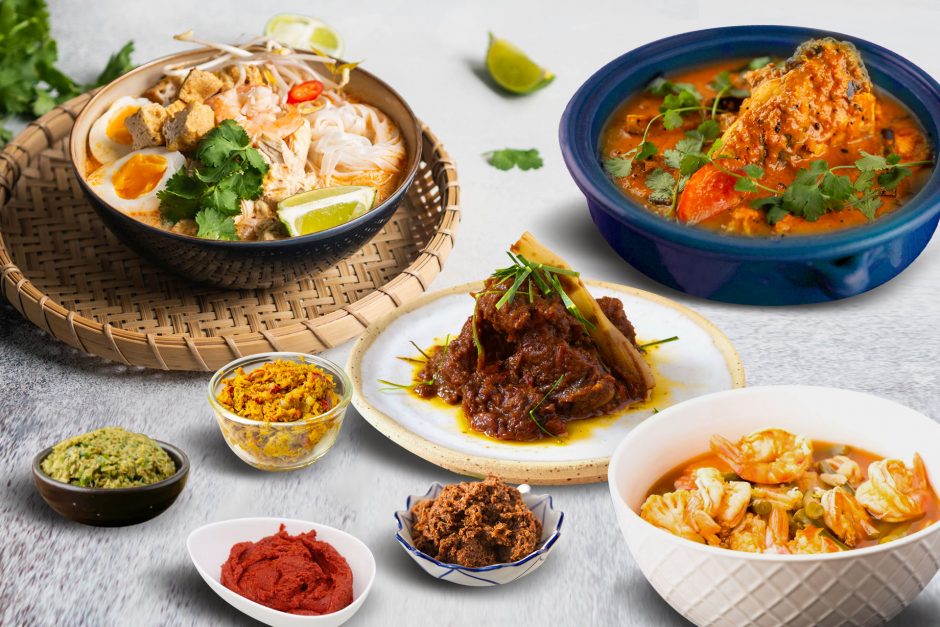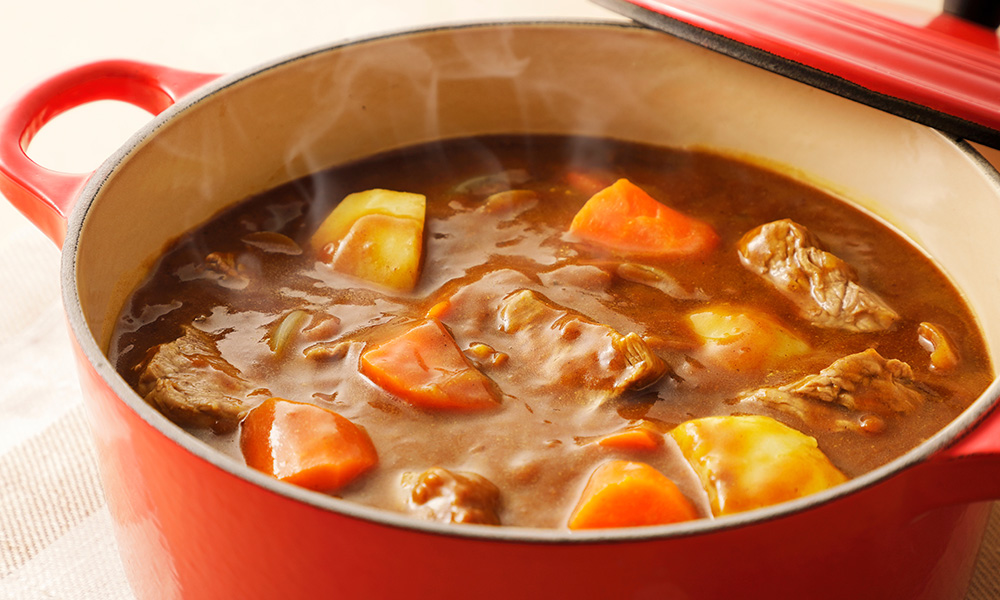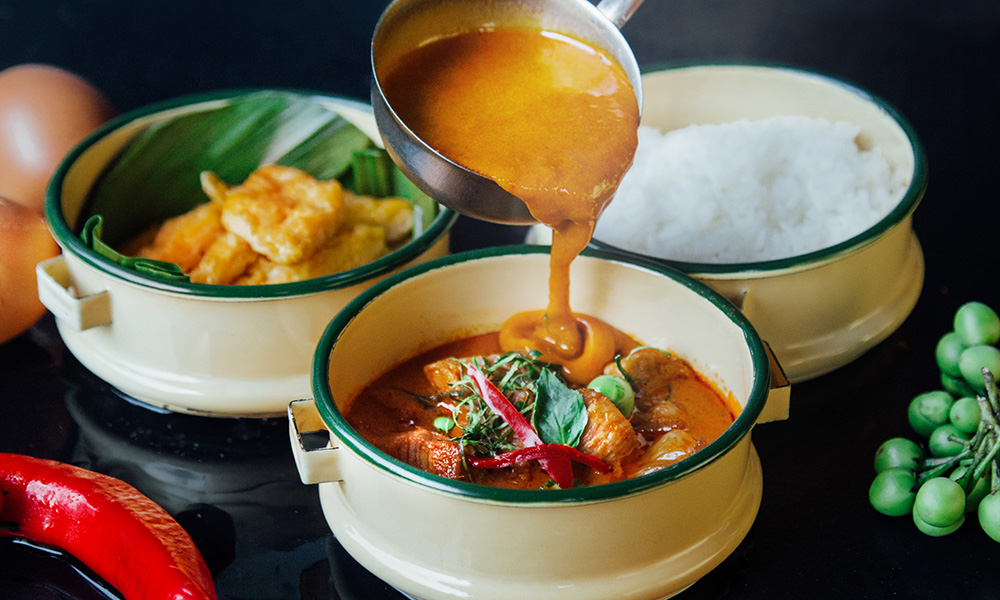Perk Up with 6 Tasteful Malaysian Drinks
Lighten your mood and rejuvenate your senses with 6 must-try Malaysian drinks!
Discover the authentic in Asian cuisine food
Around the World, Asian Pantry

All foodies had at least tried one version of curry, and there are many indeed. Since the Brit colonials brought the mix of rich Indian spices to the rest of the world, curry has become one of the most popular dishes among many cultures; each adapting and developing its own flavours enriched with local ingredients. For Asians who have long prized the use of spices in the culinary arts, curry became a near-instant addition to the local cuisines. From Japan to Southeast Asia, curry is never the same dish; and every flavour is uniquely delicious.
However, there is an ‘original curry’ from South India. Coconut milk cooked with lime juice, garlic, ginger, tomatoes, and onions; plus turmeric or cumin, and curry leaves; with the meat or fish braised with the mix. The coastal version has more coconut milk and comes with a yellowish soup. The inland version uses dried coconut and more tomatoes, resulting in a redder gravy. Piquancy depends on the chef; but the spicy fragrance, coupled with the smooth texture and meaty flavour is its main profile.

It is sometimes said that Japanese curry bears a close taste resemblance to traditional Indian curry, though without the coconut milk. Introduced during the Meiji era, and spread to the common citizenry as well as the army in the following centuries, Japanese curry isn’t just a dish, but a culture. A symbolic dish of familial love, warmth and nourishment. Thick, umami gravy with potatoes, veggies and meat savoured with rice is a ubiquitous meal from family homes and school canteens, to street vendors and restaurants alike. Milder than other Asian curries with a complex, satisfying flavour, Japanese curry has it all: carbs, proteins, and veggies. Perfect for children of all ages, and easily cooked with pre-blended curry roux containing curry powder, flour and other ingredients.
In Southeast Asia, however, curry is a feisty delight.

Even before the Brits came with curry powder from India, Thailand has Kaeng Som – a sour and spicy soup with fish or meat and local vegetables such as cauliflower, white radish and bok choy. Shrimp paste pounded with bird’s eye chilli makes the base, boiled in water to a reddish hue and cooked with the meat and veggies. But the more well-known Thai curries are, of course, the Red, Green and Yellow variants, with turmeric and lemongrass as the common ingredients that give their unique aromatic flavour; and coconut milk for the smooth-tasting texture.

Thai Red Curry is the spiciest, made with shrimp paste and flaming red chillies. Green curry is slightly milder, with coriander, kaffir lime, basil, garlic and green chilli. Yellow curry has galangal and more turmeric, typically cooked without the shrimp paste, ideal for vegan recipes. Besides these, there’s also Massaman of Southern Thailand – with a thicker but milder and lightly sweet gravy that uses cardamom, cloves, star anise, cumin, nutmeg and galangal. Massaman is usually reddish and less soupy, often cooked with potatoes and chicken, beef or mutton; and savoured with rice.
But perhaps Malaysia has the most versions of curry in Southeast Asia. All the aforementioned are easily available here, though there are certainly authentic local flavours as well.

Rendang is an appetizing Malay dish with Indonesian roots. Beef braised in coconut milk and a special curry spice mix until the liquids evaporate and the meat caramelizes to tender dark brown – amazingly sumptuous with a complex mouth-feel and deeply aromatic flavour.
Malaysian curry chicken comes in a rich gravy similar to Massaman, but much spicier and cooked with potatoes; often flavoured with a lemongrass stalk and topped with curry leaves for extra fragrance. Although typically enjoyed with rice, Malaysian curry chicken also makes for piquant, sumptuous fillings in yummy curry puffs.
Fish head curry is another Malaysian and Singaporean special; made with ginger and tamarind paste to rid the fishy smell, along with curry powder, mustard seeds, garlic cloves, and eggplant – a richly sour and spicy dish with a thick, mouth-watering gravy.

Prefer soup instead of gravy? The Malaysian curry Laksa noodles make a zesty and satisfying meal. Meat and-bone based soup with coconut cream and curry paste, cooked with chicken or prawns, veggies and noodles of your choice; topped with mung bean sprouts and refreshing mint leaf.

All these are but a fraction of the world’s myriad varieties of curries. Even within Asian cuisines, there are still many delicious thrills and piquant treats to discover and savour. Want a taste? Check out our collection of exciting curry recipes!

Lighten your mood and rejuvenate your senses with 6 must-try Malaysian drinks!

Pair your hearty barbecues with these refreshing Asian delights!

What are the properties of ginger, and how to pick, store and use ginger in your cooking? Find out here!